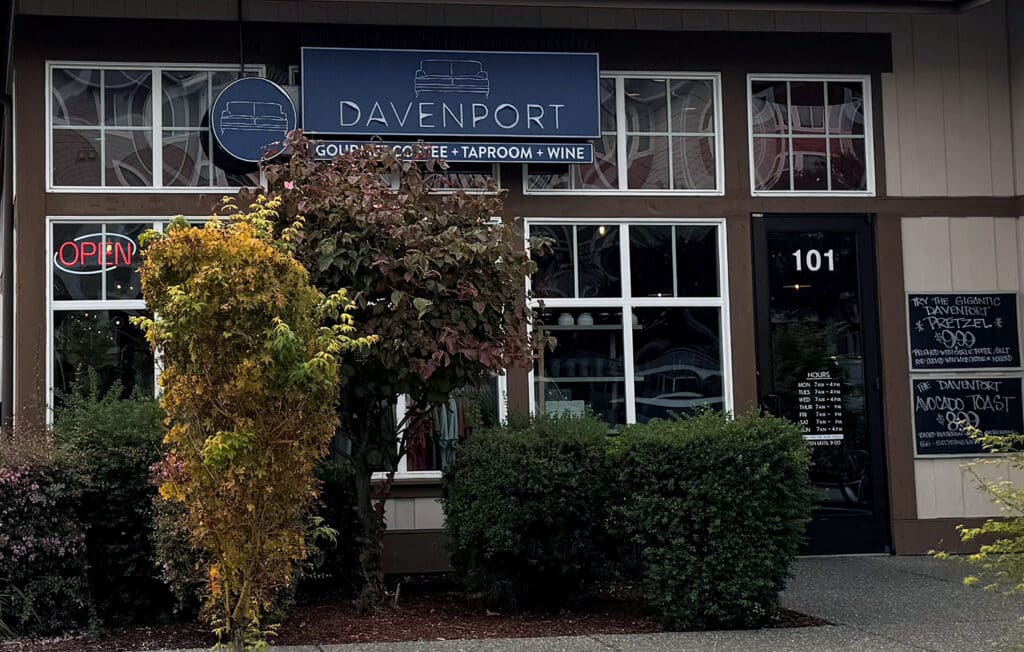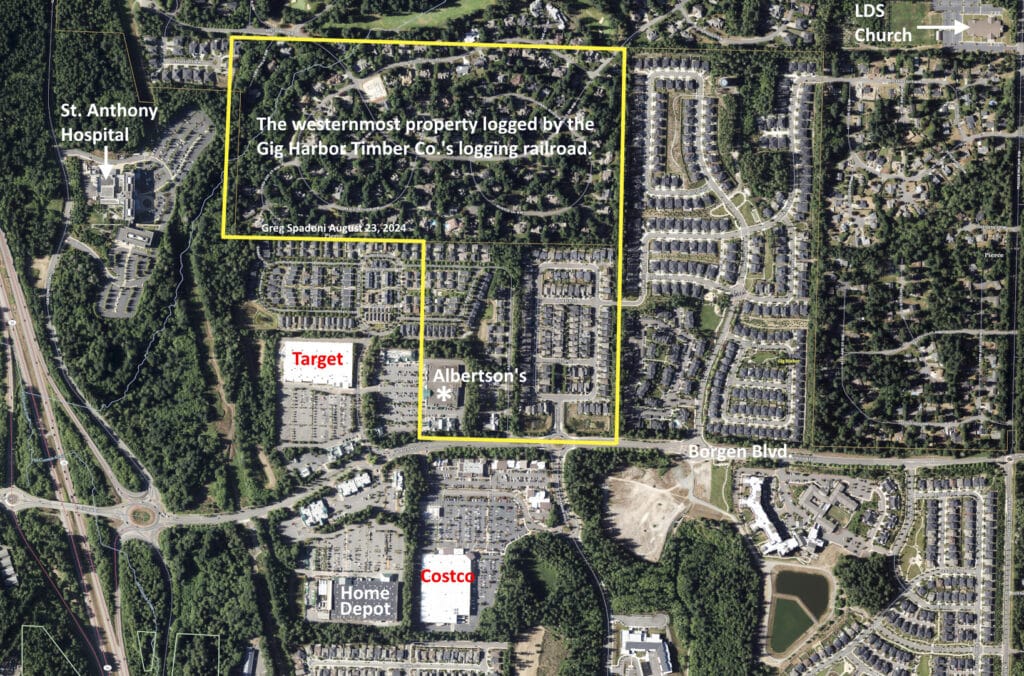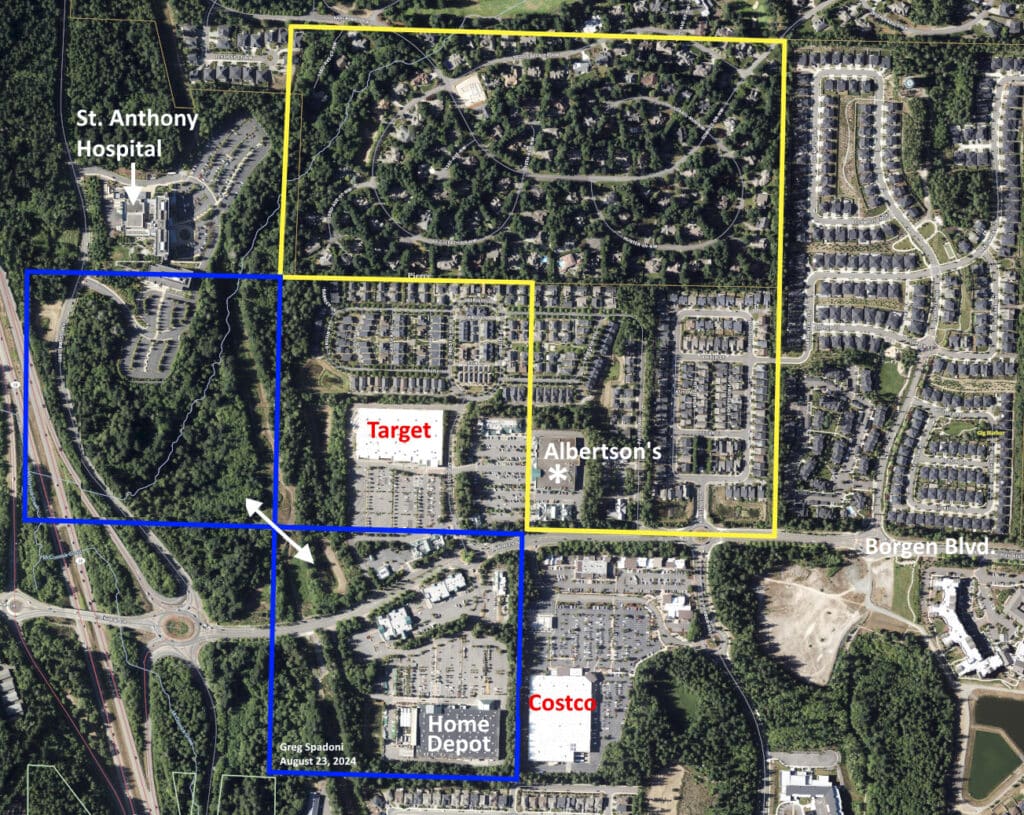Arts & Entertainment Community
Gig Harbor Now and Then | Hospitals, Home Depots and New Hampshirites
Such is the power and reach of this history column (zero and zero) that nobody bothered to inform me, after my little July 28 observation on long-ago furniture names, that the word davenport, as applied to what’s more commonly known as a couch or sofa, is indeed still in popular use on the Peninsula today. Right inside the Gig Harbor city limits, in fact.
Arts & Entertainment Sponsor
Arts & Entertainment stories are made possible in part by the Gig Harbor Film Festival, a proud sponsor of Gig Harbor Now.
It took the sharp-eyed perception of Gig Harbor Now columnist Tonya Strickland to notice and bring it to my attention.
The Davenport Gourmet Coffee + Wine + Taproom, at 5275 Olympic Dr NW, Ste 101, is actually named for the furniture, and features an artist’s outline of a daveno as its logo!

Contrary to what I previously believed, the word “davenport” has not been consigned to history. It’s alive and well in Gig Harbor at the Davenport coffee shop, and has been since 2019. Photo by Tonya Strickland.
Furthering the use of the word, they even have a Davenport pretzel on the menu, which they describe as gigantic.

Photo by Tonya Strickland
Wait a minute — you don’t suppose … could it be … is it even possible that they might have a genuine mohair davenport inside, upon which you can relax in nostalgic 1950s luxury while you lick the salt off your gigantic Davenport pretzel?
The question fairly demands that someone conduct an in-person investigation.
New old business
Our previous (and fairly undemanding) question of local history concerned one of the Peninsula’s several logging railroads.
The Gig Harbor Timber Company’s railroad began at its log dump pier on the east side of Gig Harbor and went north in the bottom of Crescent Valley. In 1911 it turned west up Peacock Hill for the second time, crossing Peacock Hill Avenue at the site of today’s LDS Church. From there it continued to the western boundary of the company’s logging operations.
What well known spot marks the western edge of the Gig Harbor Timber Company’s logging?
Answer: On the Gig Harbor Now Facebook page, Billy Sehmel nailed it again: St. Anthony Hospital.
The logging did not cross onto the hospital property itself, but reached to the edge of it.
The hospital actually has two pieces of property: The one that has the buildings, and a 13-acre tract to the east titled St. Anthony Hospital Parking and Wetland Buffer that abuts what used to be the Gig Harbor Timber Co.’s westernmost 120 acres.
The Gig Harbor Timber Company also logged the site of the Albertsons store. Not the parking lot; just where the store building sits. The property line at the time was near the sidewalk in front of the store.

The Gig Harbor Timber Co. owned the westernmost 120 acres it logged in 1911, including the south 80 acres of Canterwood, and the site of Albertsons grocery store. All the logs taken from the property passed through the space now occupied by the current LDS building on their way to Gig Harbor. Pierce County Assessor-Treasurer aerial base map.
While the logging reached those two spots, the railroad itself did not extend all the way to the edge of the hospital property or to the store site. It stopped around 500 to 700 feet short of each. Steam donkeys yarded the logs cut next to the hospital property and on the footprint of the store to at least two landings. At the landings they were loaded onto railcars, taken by a steam locomotive through the current LDS church building on Peacock Hill Avenue, down the east side of Peacock Hill to Crescent Valley, then south to Gig Harbor where they were dumped into the bay for further transport to a lumber mill.
For anyone picturing in their minds what that might’ve looked like, here’s a teaser that will screw up whatever image you have in your head: The locomotive pulled the loaded flatcars (only two or three at a time) down the hill into Crescent Valley, then pushed them the rest of the way to Gig Harbor.
So, the next time you’re in the Gig Harbor Albertsons store, give a thought and nod to the hard-working loggers who cut down the big trees standing in the deli, the meat department, the freezers, and the pet food aisle, all with hand saws. They worked up a sweat over the entire site just so you could buy groceries free of fir needles and cones … well, that and their pay of between $2.50 and three dollars a day.
Bragging rights
It’s worth mentioning — OK, bragging — that I have finally learned to correctly spell the name of Gig Harbor’s hospital. For far too long, I thought it was St. Anthony’s Hospital. It’s not. It’s actually St. Anthony Hospital, without the possessive apostrophe “s.”
The implications are many. It correctly follows that St. Joseph’s in Tacoma is really St. Joseph Medical Center, and St. Michael’s in Silverdale is St. Michael Center.
How did I manage to screw that up all these years? Was it just because everybody else does it too?
Logging another store site
Continuing with the subject of local railroad logging for a third consecutive column, we pivot from Albertsons in Gig Harbor North to Home Depot, diagonally across Borgen Boulevard.
The Home Depot site was also logged by railroad, though a little sooner than the Albertsons store, sometime between 1907 and 1910. While they were at it, the same loggers also took the old-growth trees off the south parking lot of St. Anthony Hospital.
This week’s questions:
Who logged the old growth from the Gig Harbor Home Depot site?
Hint: It wasn’t the Gig Harbor Timber Company.
Where were the logs dumped?
How did the railroad that logged the Home Depot site differ from the one that logged at the future Albertsons store?
There were two fundamental differences.
We’ll have the answers on Sept. 9. But because the name of the person who owned the railroad that logged the Home Depot site in Gig Harbor is generally unknown, no further hints would be of any help. Instead, to make it more sporting, we’ll turn the first of the three questions into a simple multiple choice.
Who logged the old growth from the Gig Harbor Home Depot site? Was it:
- Paul Bunyan
- Troy Donahue
- George Borgen
- Willie Mays
- Elon Musk
- Jethro Bale
- Alphonzo Young
- Bert Blake
- Harry Rowley
- Lottie Rowley
- Katharine Hepburn
- Peter Alvestad
- Julius Spadoni
- Harold Ryan
- Peter Skansie
- George Magoon
- Tom Quigley
- Dr. Lambing
- Andrew Brevick
- Sam Pollock
- Edgar Buchanan
- Frank Howard Adams
- William Tymms
- None of the above
- All of the above
- One of the above
See how easy multiple choice can be?
A need for bloating
Just like last time, once again we find the column short on length. But this time, instead of adding pointless padding, we’ll add pointful padding that actually pertains to the subject of the new question. We’ll do that by tracing the early ownership of the site that is today’s Home Depot. (We’ll also switch the point of view of the narrative from the collective “we” to the individual “I,” and back again, for no apparent reason.)
I was going to look into the early ownership of the site anyway, but in the course of doing so, the ownership trail actually turned out to be interesting. I hadn’t counted on that, but I’ll take it. It raises a lot of questions I can’t answer, but as a grizzled old newspaper editor once told me … OK, so I’ve never known a grizzled old editor, newspaper or otherwise. But if I had, I picture him as disheveled, unkempt, and mumbling incoherently while spitting tobacco juice on the floor, uncomfortably close to my shoe. Or maybe that’s something a saw in a movie; I don’t know.
Like all the logging railroads on the Peninsula, the one that cut the old growth on the Home Depot site over a hundred years ago logged parcels of land that it owned and, through timber contracts, logged properties it didn’t own. In this case, the man who owned the logging company also owned the land of the future 16-acre Home Depot site. At the time, it was a 37.84-acre piece. He bought only the timber on the future south parking lot of the hospital, which was a 40-acre parcel.

Like the Albertsons store on the opposite side of Borgen Boulevard, the old-growth Douglas fir and cedar on the Home Depot store site was also logged by rail, as was the south parking lot of St. Anthony Hospital. Pierce County Assessor-Treasurer aerial base map.
Early owners of the Home Depot site
The first owner of the future Home Depot site in Gig Harbor was Jesse Ross and his wife, who paid $47.30 in cash to the federal government for it in 1890 (the patent was issued in 1892). They sold it to Robert and Sara Franklin in 1892 for an unknown price, although it had an outstanding mortgage on it of $200 or more, issued by Jesse Ross to John L. Farwell. That indicates the Rosses had a home on the property, or at least some other improvements that added value to the land.
The Franklins were early residents of the original Gig Harbor plat at the head of the bay, so may not have lived on the property themselves. They held a lot of investment property in the immediate area at the time, so perhaps the Home Depot site was a rental.
The Franklins sold the land to Joseph S. Ford of Exeter, New Hampshire, in 1897. Because Ford didn’t appear at the closing, it’s possible he never left New Hampshire, and bought the land sight unseen.
It’s also highly likely the next owner of the property never saw it either. Joseph Ford sold it in 1901 to the Protestant Episcopal Church of Concord, New Hampshire. The terms were not disclosed, but the $200 mortgage to John L. Farwell was still in effect.
(The future site of the Gig Harbor Home Depot store was not the only real property owned in Pierce County, Washington, by the New Hampshire church.)
The Protestant Episcopal Church of Concord sold the 37.84 acres to two of its trustees, Harry H. Dudley and Mason J. Hill, on August 1, 1905 (recorded January 2, 1906).
The last owners of the property before the logging company owner bought it were Joseph & Clara Matthews, also of New Hampshire. Their deed was not found, but they bought it sometime between August 1905 and June 1906.
The Matthewses sold the future Home Depot site to the logger in July 1906.
Difficult questions
Why did a man in New Hampshire buy property in Gig Harbor? Perhaps he was planning on moving to the west coast. But he didn’t attend the closing of the sale, so did he ever even see the land?
Why did a church in New Hampshire buy property in Gig Harbor? It’s very unlikely it was considering moving to the opposite coast, what with the parishioners’ weekly commute from Concord being such a killer, and all.
Why did the next three owners all reside in New Hampshire?
The answers are: don’t know, don’t know, don’t know, and don’t know.
Those answers hardly seem appropriate for a history column, but when you don’t know, you don’t know. I’d be willing to bet a half a peanut butter and wild red huckleberry jam sandwich that nobody else around here knows either. But I’d trade a whole one to anyone who does.
Credit where credit is due
Because we know the who, the what, the when, and the where, lacking only the why, shouldn’t we get 80% credit on the story of the property’s early ownership?
Yes, we should.
And since it takes only 70% to get a passing grade of average, we have more than fulfilled the requirements of this week’s column. The Defense rests.
Next time
In addition to the answers to this week’s three questions of local logging history, on Sept. 9 we’ll take a brief look at cigarette smoking on the 20th century Peninsula. In typical Gig Harbor Now and Then fashion, we’ll be looking at it from a somewhat different angle than might normally be expected. It’s usually more interesting that way.
— Greg Spadoni, August 26, 2024

